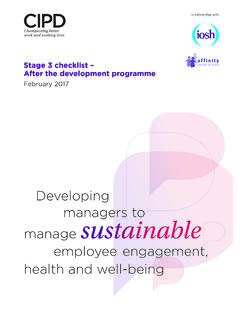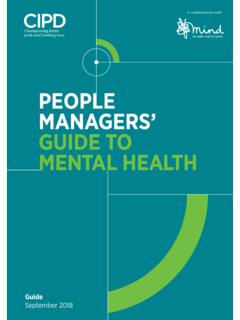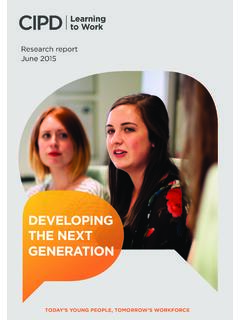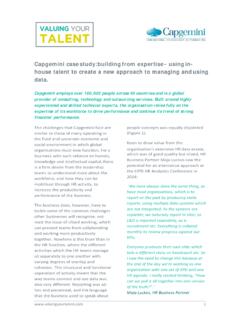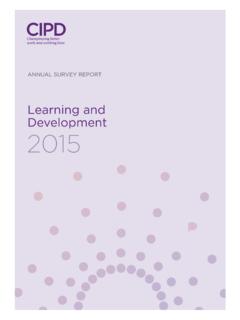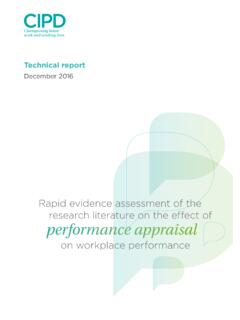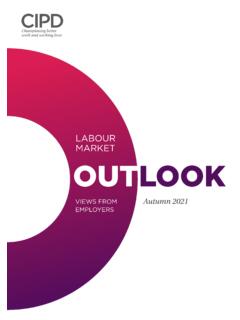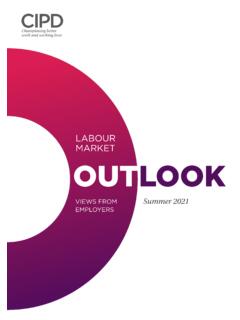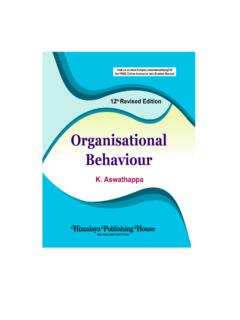Transcription of Workplace technology report - CIPD
1 report | July 2020 Workplace technologyThe employee experienceThe CIPD is the professional body for HR and people development. The registered charity champions better work and working lives and has been setting the benchmark for excellence in people and organisation development for more than 100 years. It has more than 150,000 members across the world, provides thought leadership through independent research on the world of work, and offers professional training and accreditation for those working in HR and learning and technology : the employee experienceReportWorkplace technology : the employee experience Contents Introduction 2 About this research 5 Findings 6 Conclusion 21 Appendix 24 Notes 24 AcknowledgementsThis report was written by Ed Houghton.
2 Head of Research at the CIPD, and Louisa Baczor, independent research d like to thank Dan Lucy and Jenny Holmes at the Institute for Employment studies for their independent analysis and expertise in helping to shape this the employee survey, we d like to thank Ian Neale and Kate Gosschalk of YouGov s quantitative analysis team. For the online focus groups with employees, we d like to thank Melanie Nicholls and Mariana Owen of YouGov s qualitative analysis team. Publication informationWhen citing this report please use the following citation:CIPD. (2020) Workplace technology : the employee experience.
3 London: Chartered Institute of Personnel and technology : the employee experience1 IntroductionThe impact of the latest technology revolution on how organisations create value and on the way people work spans all industries, economies and parts of The emergence of big data, increased digitisation and improvements in artificial intelligence (AI) mean that new technologies can assist with more complex tasks, augmenting roles and potentially changing the nature of work. Employers are investing in new technologies with the primary aim of increasing business performance through improved quality and cost However, the impact of new Workplace technology on people s jobs and working lives must be considered, particularly as this will only increase in future as technology plays a greater role in modern work.
4 Understanding the impact of technology on work and the workforce is a central concern of the modern people profession. People professionals have a pivotal role to play in understanding the human implications of working with different technologies. AI and automation are transforming work, but to see positive impacts, people need to be managed and supported accordingly, so they can adapt to changing roles, reskill if necessary and have their concerns about technology limitations addressed. In view of this, the people profession should be present in tech strategies to ensure technology implementation supports and enhances productivity as well as employee job quality.
5 This report builds on several studies by the CIPD which explored the rise of technology in particular automation and AI in the This report looks closely at the views and experiences of employees as technology plays an increasing role in their work lives. We investigate the impact of technology on working life, and look to understand how technology is being used by those working from home during the COVID-19 pandemic. From these insights, we identify the practical steps people professionals can take to improve the chances of making their technology implementation a success for their organisations and are people professionals?
6 In this report , we use the term people professionals to describe professionals working in the following disciplines: organisational development (OD), organisational design, organisational change, learning and development (L&D), recruitment, compensation and benefits, talent management, human resource information systems/human resource management systems and human resources (HR). technology and the modern world of workThe world of work has long experienced the transformative effects of technology . In the modern era, technologies such as automation, robotics and AI have exerted consistently growing pressure on work and the Workplace .
7 Jobs are changing as a result of new Workplace technologies: data shows that automation and digitisation are transforming jobs by substituting, augmenting and creating new tasks for workers .4 While technology has the potential to replace or undermine jobs, the CIPD s recent research suggests that the positive impact in terms of job enrichment and creating new professional development opportunities tends to outweigh the negative. These technologies are likely to lead to a net gain in job numbers, with new types of jobs emerging as some disappear. Our previous survey showed that overall, 35% of employers that have introduced AI and automation in the last five years saw more jobs as a result and over four in ten believed jobs most affected by these technology changes had become more secure.
8 In addition, new jobs being created tend to be higher skilled. But as demand for certain skills declines and new ones emerge, workers will need to continuously learn new technology : the employee experienceIntroductionAre global economies headed towards technology dystopia? Widespread fears remain about the adverse impact of technology at a macro level. The OECD s 2019 report suggests that 14% of existing jobs could disappear in the next 15 20 years, and another 32% are likely to change radically as individual tasks are Similarly, the World Economic Forum s 2018 report suggests that the human share of labour hours will decrease from 71% to 58% by 2025, and nearly half of organisations expect automation to drive a reduction in the full-time workforce by A recent example of this was at Microsoft, where many journalists jobs had been replaced by The impact of new Workplace technology on the labour market is not evenly distributed.
9 Middle-skilled jobs are particularly vulnerable employment in the manufacturing sector has declined by 20% over the past two decades, while employment in services grew by 27%, leading to more jobs at the high- and low-skilled ends but a hollowing out of middle-skilled There s a risk of polarised access to new technology since not everyone has the bargaining power or can benefit from better jobs that emerge, resulting in inequalities. People may be stuck in precarious and low-quality work for example, the OECD suggested that low-skilled people are less likely to participate in training, and non-standard workers are 40 50% less likely than standard employees to receive any income support when out of However, doomsday scenarios are unlikely to materialise.
10 There are more opportunities to participate in the labour market for many who were formerly excluded. Jobs are being created at a faster rate than they are disappearing, and as mentioned, the new jobs created tend to be higher skilled than those they working through COVID-19 While technology advancements have enabled more flexible and remote working over the past couple of decades, the COVID-19 pandemic has driven a dramatic spike in virtual collaboration and homeworking. Organisations have been challenged to rapidly develop solutions that help maintain both productivity and employee wellbeing for an entirely remote These demands have led to a shift in priorities for the people profession, with a key focus now on retention, health and wellbeing, and employee While most people professionals recognise the need to step up to support line managers through the impact of the pandemic, nearly a quarter of employers feel that their people teams are not supporting line managers sufficiently.
